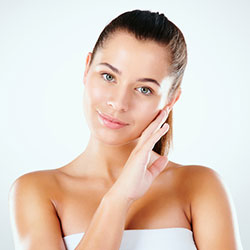Botox and Dermal Filler 101

There was a time when cosmetic injectables were considered “taboo”. While there are still people who label them as unnatural, times are changing, and for the most part, Botox is no longer considered a dirty word.
Girls as young as their early to mid-20s are getting it, mainly as a measure to prevent future deep wrinkles or lines of facial expression. There are also many different dermal fillers in the market – these should not to be confused with Botox, let alone with each other. Here’s the scoop on Botox and dermal fillers:
“Botox” and related products such as “Xeomin”, “Jeaveau” and “Dysport” are used to relax muscle movements from facial expressions, whereas dermal fillers are designed to add more volume, restructure, sculpt, and contour the face. The cosmetic benefits are numerous, and neurotoxins and fillers are often used in tandem, but they are certainly not interchangeable. Botox and fillers each address their own set of aesthetic concerns.
By nature, Botox is a neurotoxin, mainly inactive and therefore nontoxic. While there are risks involved in any procedure, with the proper knowledge, experience, and skill, Botox and dermal fillers are both very safe. It is extremely important to do one’s homework and not to jump on the next Groupon deal that comes across. The injector with the proper knowledge and skillset will give you the results you are looking for.
Botox and fillers are both typically used to preserve youthfulness and address the effects of aging. As we age, there is loss of bone density, volume of fat and collagen, and skin elasticity resulting in sagging and loss of facial contour. While Botox and the related neurotoxins can improve the fine lines and wrinkles brought on by repeated use of our muscles of facial expression, fillers are used to replace the loss of volume in our face. Often patients do not know the difference between the two and will come in wanting Botox to restructure their cheekbones or under-eyes. It is imperative to be treated with the right products in the right places.
There are many brands of dermal fillers on the market that come in varying consistencies and they can be injected differently. Different areas of the face call for different viscosities—i.e. the substance used in the lip isn’t necessarily appropriate for the cheekbones, and the substance in the cheekbone isn’t appropriate for the tear troughs (under-eyes) because our skin, underlying muscles and volume of fat is so different from facial region to region.
If one desires to get rid their forehead lines, frown lines, 11s (the two vertical worry lines that form between your eyes), or the lines around the corner of one’s eyes while smiling (crows feet) one should be looking to be treated Botox or other neurotoxins. However, if you are in search of non-surgical nose job, a plumper pout, enhanced cheek bones, or corrected jowls, one might need varying amount of dermal filler for each spot.
Of course, it’s all personal preference, and everyone’s skin ages so differently based on factors like environment, diet, habits, and genetics. Knowing one’s options is vital and getting the facts straight before taking the (needle) plunge is the most important step.
